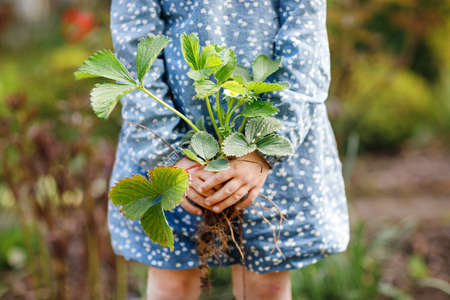Understanding Common Garden Pests in America
Keeping your garden healthy starts with knowing which pests are most likely to show up in your backyard. Across the United States, gardeners encounter a range of critters that can cause trouble for flowers, veggies, and even fruit trees. Identifying these pests early is key to protecting your plants and using natural control methods that are safe for your family, pets, and local wildlife.
Overview of Frequent U.S. Garden Pests
Here’s a quick look at some of the most common garden pests you might see in American gardens:
| Pest | What They Look Like | What They Target | Signs of Damage |
|---|---|---|---|
| Aphids | Tiny, soft-bodied insects; green, black, or brown | Vegetables, roses, fruit trees | Curling leaves, sticky residue (honeydew), stunted growth |
| Squash Bugs | Flat, brownish-gray bugs; about 1/2 inch long | Squash, pumpkins, cucumbers | Wilting vines, yellow spots on leaves, shriveled fruit |
| Deer | Large mammals; often leave tracks behind | Shrubs, vegetables, fruit trees, flowers | Torn leaves, missing buds and stems, hoof prints in soil |
| Japanese Beetles | Metallic green and copper beetles; about 1/2 inch long | Roses, beans, grapes, many ornamentals | Skeletonized leaves (only veins left), chewed flowers |
| Caterpillars (e.g., Tomato Hornworm) | Green worms with horns or stripes; up to 4 inches long | Tomatoes, peppers, eggplants | Large holes in leaves and fruit, visible droppings (frass) |
| Slugs & Snails | Soft-bodied creatures with or without shells; slimy trail | Lettuce, hostas, strawberries, leafy greens | Irregular holes in leaves, slime trails on soil and plants |
| Squirrels & Rabbits | Small mammals; often seen during daytime hours | Berries, peas, carrots, tender shoots and seedlings | Nibbled plants close to ground level; dug-up bulbs or seeds |
Why Identification Matters for Natural Pest Control
If you want to keep pests out of your garden naturally—without harsh chemicals—the first step is knowing exactly what’s causing the problem. Different pests require different solutions: what works for aphids won’t help if deer are munching your tomatoes! When you can spot the signs early and identify the culprit quickly, you’ll be able to act fast with targeted organic methods. This helps protect your plants while keeping your garden eco-friendly and safe for pollinators like bees and butterflies.
Quick Tips for Spotting Pests Early:
- Check the undersides of leaves regularly for tiny insects or eggs.
- Look for unusual holes or patterns of damage on foliage.
- Watch for animal tracks or droppings around your garden beds.
- If you see a lot of ants on your plants, they may be “farming” aphids for their honeydew.
The Bottom Line: Get to Know Your Garden Guests!
A little time spent observing your garden each week goes a long way toward catching pest problems before they get out of hand. The more familiar you are with common pests in your area—and how they behave—the easier it will be to protect your harvest using safe and natural methods.
2. Attracting Beneficial Insects and Wildlife
One of the most effective and eco-friendly ways to keep pests out of your garden is by inviting natural predators that help control unwanted bugs. Ladybugs, birds, and bats are some of the best allies you can have in your backyard. Here are easy tips for encouraging these helpful creatures to make your garden their home:
Ladybugs: Tiny Warriors Against Aphids
- Plant Their Favorites: Ladybugs love flowers like dill, fennel, yarrow, marigolds, and cosmos. These plants provide pollen and nectar that attract ladybugs.
- Avoid Pesticides: Chemical sprays can harm ladybugs as much as pests. Opt for natural pest control methods instead.
- Provide Shelter: Small piles of leaves or ground cover plants give ladybugs safe places to hide and lay eggs.
Birds: Feathered Pest Patrol
- Add a Bird Feeder: Offer seeds during the winter, but switch to suet or mealworms in spring and summer when birds need protein for their young.
- Install Birdhouses: Different types of birdhouses attract different species. Bluebirds, wrens, and chickadees are all great at eating insects.
- Fresh Water Source: A birdbath or shallow dish of water will keep birds coming back. Change the water often to prevent mosquitoes.
- Native Plants: Grow berry bushes and native shrubs to provide food and shelter for local birds year-round.
Bats: Nighttime Bug Busters
- Put Up a Bat House: Place bat houses on a pole or building 12–20 feet above the ground in a sunny spot with minimal obstructions.
- Avoid Bright Lights: Bats prefer darker areas, so use low lighting near bat roosts.
- Create Water Features: Small ponds or birdbaths help bats stay hydrated while they hunt at night.
Quick Reference: How to Attract Garden Helpers
| Helper | What They Eat | How to Attract Them |
|---|---|---|
| Ladybugs | Aphids, mites, soft-bodied insects | Plant dill, marigold; avoid pesticides; provide ground cover |
| Birds | Caterpillars, beetles, grubs, grasshoppers | Add feeders & houses; plant native shrubs; provide fresh water |
| Bats | Moths, mosquitoes, beetles, flying insects | Install bat houses; minimize outdoor lights; add water features |
Tip:
If you notice a sudden drop in beneficial insects or wildlife visitors, check for any new chemicals or disruptions in your garden environment. Keeping things as natural as possible helps maintain a healthy balance between pests and their predators.
![]()
3. Companion Planting Strategies
One of the easiest and most natural ways to keep pests out of your garden is through companion planting. This means growing certain vegetables, herbs, and flowers together because they help each other thrive and keep bugs away. Not only does this cut down on the need for chemical sprays, but it also creates a healthier and more diverse garden that supports beneficial insects.
How Does Companion Planting Work?
Certain plants release scents or oils that pests dont like, while others attract helpful insects that eat garden pests. By pairing the right plants, you can confuse, repel, or distract common bugs naturally. For example, marigolds are famous for keeping aphids and nematodes away from veggies like tomatoes and beans.
Popular Companion Plant Pairings
| Vegetable | Good Companion Plants | Pests Deterred |
|---|---|---|
| Tomatoes | Basil, Marigold, Garlic | Aphids, Tomato Hornworms |
| Cucumbers | Nasturtium, Radishes, Dill | Cucumber Beetles, Aphids |
| Carrots | Onions, Chives, Rosemary | Carrot Flies, Aphids |
| Cabbage Family (Broccoli, Kale) | Sage, Thyme, Mint | Cabbage Moths, Flea Beetles |
| Beans | Marigold, Nasturtium, Rosemary | Mexican Bean Beetles, Aphids |
| Lettuce | Chives, Garlic, Calendula | Aphids, Slugs |
| Squash/Zucchini | Nasturtium, Marigold, Oregano | Squash Bugs, Aphids |
| Peppers | Basil, Onions, Marjoram | Aphids, Spider Mites |
Tips for Successful Companion Planting:
- Mix it up: Avoid planting large blocks of the same crop. Diversity confuses pests and supports more helpful insects.
- Add flowers and herbs: Flowers like marigolds and herbs like basil or dill not only look pretty but work hard to protect your veggies.
- Rotate crops each year: Changing where you plant things helps prevent pest populations from building up in the soil.
- Start small: Try a few pairings at first and watch what works best in your own backyard.
Remember:
No garden is completely pest-free, but using smart companion planting can make a big difference. Your plants will be happier—and so will you!
4. DIY Natural Pest Repellents
If you want to keep your garden pest-free without using harsh chemicals, there are several easy homemade solutions you can try. These natural remedies are safe for your family, pets, and the environment—and they’re super simple to make with items you probably already have in your kitchen or pantry.
Popular Homemade Pest Repellents
| Repellent | Main Ingredients | How It Works | How to Use |
|---|---|---|---|
| Garlic Spray | Garlic, water, mild soap | The strong smell of garlic keeps aphids, beetles, and other bugs away. | Blend a few cloves of garlic with water, strain, add a drop of dish soap, and spray on plant leaves. |
| Neem Oil Mix | Neem oil, water, mild soap | Neem oil disrupts the life cycle of many common pests like mites and whiteflies. | Mix 1-2 teaspoons neem oil with 1 quart of water and a few drops of dish soap. Spray directly onto affected plants. |
| Coffee Grounds | Used coffee grounds | Coffee grounds deter ants, slugs, and even cats from entering your garden beds. | Sprinkle used coffee grounds around the base of your plants or garden borders. |
How to Make Garlic Spray at Home
- Peel and crush 4-5 cloves of garlic.
- Add them to a quart (about 1 liter) of water.
- Let the mixture sit overnight for best results.
- Strain out the garlic pieces and pour the liquid into a spray bottle.
- Add a drop of mild dish soap (this helps the spray stick to leaves).
- Mist your plants every few days or after rain for ongoing protection.
Why Choose Natural Repellents?
- No harsh chemicals: Safe for kids and pets playing in the yard.
- Eco-friendly: Won’t harm beneficial insects like bees or butterflies.
- Easy on your wallet: Uses items you already have at home.
Troubleshooting Tips
- If you notice pests returning, reapply sprays after heavy rain or watering.
- Always test homemade sprays on a small part of the plant first to avoid any unexpected reactions.
- Combine different methods for better results—layering repellents often works best!
5. Physical Barriers and Organic Maintenance
Keeping pests out of your garden doesn’t have to mean reaching for harsh chemicals. There are several natural and effective methods you can use to protect your plants while keeping your garden safe for pollinators, pets, and kids. Here’s how you can use physical barriers and organic maintenance to deter unwanted bugs and critters.
Using Row Covers
Row covers are lightweight fabrics that lay over your crops, creating a shield between your plants and pests like aphids, cabbage worms, and beetles. They allow sunlight, air, and water to reach the plants but stop insects from getting in. Make sure the edges are tucked or pinned down so pests can’t sneak underneath. Remove covers when plants start to flower so pollinators can do their job.
Mulching for Pest Control
Mulch isn’t just for retaining moisture and suppressing weeds—it also helps keep certain pests away. Organic mulches like straw, shredded leaves, or grass clippings make it harder for crawling insects to reach your plants. Mulch also creates a habitat for beneficial insects that prey on garden pests.
Regular Hand-Picking
This method might sound old-school, but hand-picking bugs like tomato hornworms or Japanese beetles is quick, chemical-free, and effective for small gardens. Early morning or late evening is best since pests are less active then. Drop them into a bucket of soapy water as you go.
Hand-Picked Pest Chart
| Pest | When to Look | Removal Tip |
|---|---|---|
| Caterpillars (Hornworms) | Early morning/Evening | Check leaf undersides; drop in soapy water |
| Japanese Beetles | Morning | Shake off branches onto tarp; collect by hand |
| Squash Bugs | Midday | Look at stems/base of plants; crush eggs on leaves |
Tips on Garden Hygiene
A clean garden is less inviting to pests. Remove fallen fruit, dead leaves, and plant debris regularly—these can harbor insect eggs and disease. Rotate crops each season so pests don’t get comfortable. Clean tools between uses to prevent spreading any hidden larvae or pathogens.
Quick Garden Hygiene Checklist:
- Pick up fallen fruit and veggies promptly
- Remove dead or diseased plant material weekly
- Rotate crops each year if possible
- Sterilize pruners and trowels between uses
- Avoid watering late in the day to reduce fungal growth
By combining these simple strategies—using row covers, mulching with organic materials, hand-picking pests, and maintaining garden cleanliness—you’ll create a healthier environment for your plants without relying on synthetic pesticides.


